Let’s talk...
About our child’s desires and dreams: We can talk about them, reflect on whether they are achievable, and explore how to turn desires into goals and what helps us achieve them.
About problem-solving: What challenges have we faced, and how have we successfully invented solutions? We can recall our child’s successful experiences.
About natural phenomena: We can observe a natural phenomenon, listen to our child’s explanation, and explore its scientific reality together, such as falling leaves, sunset, and sunrise, cloud formation, and rain.
About gifts: What gifts does our child wish to receive? What surprise gifts have delighted them?
About our shared experiences: What activities does our child want to participate in together? We can brainstorm ideas for an enjoyable and meaningful time together.
Let’s enrich our Language...
The moon: We can learn the basic phases of the moon (crescent, full, new). We familiarize ourselves with the concept of lunar months.
Nisan: It is one of the months in the Gregorian calendar (solar). We can recall the months and observe the characteristics of each of them.
Meanings of words: We can clarify new words and explain their meanings (gap, dim, stillness). We can think with our child about words that sound or mean something similar.
Let’s explore...
Light and shadow: We can choose a room for a nighttime game, turn off the lights, and use lamps to explore the images we can create by reflecting our shadows on the wall. We can invent shapes and movements and enjoy their shadows.
Moon phases: We can observe the moon for several days. We may photograph or draw it and compare its different phases. We may seek information from scientific sources.
Let’s create...
Enjoy songs and poems about the moon. We can perform expressive movements, dancing together to their tunes.
Prepare a moon-themed board: We can add shiny crescent-shaped strips to a black cardboard every day until it completes the full moon shape.
Let’s talk...
About experiences: We can follow the journey of the dinosaur and his friend Jojo, engaging with children about the places he visited, his behavior, his feelings, and the risks he This is an opportunity for us to accompany them on their journey and learn from their experiences.
About desires: We can talk about the places the dinosaur might want to visit and the activities he might want to do. We should encourage our child to suggest other places from their own experiences and ask them about the places they want to visit and the things they want to do.
Empowering the child and fostering a sense of capability and independence: We can discuss tasks our child can do on their own and those where they may need our assistance, along with their accompanying feelings. We can identify tasks or skills our child wants to learn, such as putting on shoes or making the bed, and support them in achieving those goals.
Let’s have fun and play...
“Where did the items hide?”: Let’s play the game “Hot or Cold.” We can hide the items and let the child search for them. We can guide them with the word “hot” when they are close and “cold” when they move away.
Let’s enrich our language...
We can enrich our child’s language and encourage them to describe what the dinosaur did during his visits to different places. We can use precise verbs and nouns, adding new qualities. For example, we might say, “a huge dinosaur, tall buildings…”
Let’s create...
A growth chart: we can choose a wall in the house and mark the child’s height on it. We can select pictures of our child at different ages and stick them in a long album, creating a growth chart from sturdy cardboard and decorating it. We can discuss our child’s abilities at each stage from birth to today and talk about things they would like to develop.
Discuss...
The importance of books: Anwar noticed some changes in town when the books disappeared. Talk to your children about the changes and why they believe these changes occurred.
The love for reading: Anwar loved reading. He was sad when the mayor tore up the books. Ask your children: How does Anwar feel when he reads? How do you feel when you read or listen to a story?
The types of books our children prefer: The text indicates different kinds of books (story, poetry, cookbook). Talk to your children about book types they know and are in the libraries. Ask them: Which books do you like? Why?
Creativity and imagination: Anwar succeeded in creating and publishing books for people in town, influencing their lives. Ask your children: Where, in their opinion, does the idea of a book come from? How did Anwar write his books? Support and talk to your children about their experiences and stories they may want to write.
Explore...
Visit your town’s public library and search, with the children, for books they love.
Enrich your language...
Enrich your child’s lexicon with the names of new plants: dandelion, red maple, and willow. Which flowers/wild trees can we see in abundance in our country?
Create...
Together with your children, enjoy the book’s drawings. The drawings are made with the collage technique and include fine details that provoke laughter or sadness. The collage is comprised of newspaper clippings in several languages and strange illustrations.
Let’s talk...
-About the child’s passion for reading her book: The child is immersed in reading her book and cannot leave it. In your opinion, what is the book about? Is there anything that tells us that? What about the drawings? Is there something that attacks them and they cannot let go of?
-About reading habits at home: The child chose to read her book on a rainy day. We can ask our children: When would they like us to read to you? We can ask ourselves: Do we read as parents so our children would imitate us?
-About the types of books that our children prefer: With our children, we can try to remember books we have read, and we can ask them: Which books do they like? Why?
-The characters in the book: The child’s imagination is imbued with the heroes of the books she has read and communicated with. We can ask our children: Which book characters do they know and would like to have a conversation with?
Let’s act and play...
-We can choose a fictional character that our child likes from one of their favorite books, or from this book, and we can act out the role of that character who tries to persuade the child to leave her book, and the role of the child who clings to the book.
-The drawings highlight many different games. We can choose a game and play it with our children at home.
Let’s create...
-The book’s drawings are very beautiful and contain various details about legends and stories from around the world. We can choose one of these stories, and we can search for a movie that was adapted from it. We can read the story together, and then watch the movie in an intimate family environment.
We can stop on...
We can stop on every page and help Albert discover 10 strange and curious things on each page.
We can search...
Professor Zweistein and Albert are two passionate researchers. We can search the drawings for the tools they use in their search.
The drawings present...
The drawings present a rich world of the creatures in nature. Let’s get to know their names and qualities.
We may want...
We may want to open our closet or our parents’ closets to search for film camera, such as the one that Albert carries. Our child will surely be delighted to learn about the different cameras throughout the ages.
We are often...
We are often attracted to strange things on the street or in public places, and sometimes in our own homes. We may stand in front of them smiling and hasten to photograph them. It would be fun to prepare a family project over a week, during which we photograph anything we find strange around us, and then share those pictures among us.
Our child might...
“Our curious room!” Our child might want to draw their room, hiding 10 strange and illogical things. Will we succeed in discovering them?
We look for...
We look for little rabbit’s displays of anxiety or fear in the illustrations. What do we do when we are afraid? We talk with our children about the things that may worry them and think together about ways of relief.
The wolf overcame...
The wolf overcame many obstacles to reach the house of his friend, the rabbit. We try to remember a similar experience with our children, in which they had to overcome hardships to reach a goal.
Despite the rabbits...
Despite the rabbits’ fear of the wolf, little rabbit and the wolf are friends. Do we know friends who are different?
The wolf is...
The wolf is an unexpected guest at the rabbit’s birthday party. Who may be an unexpected guest at our birthday party?
This book is...
This book is distinguished by the relation between the text and the illustrations that reflect what the child imagines in contrary to what the mother says. We can imagine additional obstacles that the wolf may encounter and overcome.
Where did the sun go...
“Where did the sun go?” We can think of humorous answers to write or draw on the last page of the book.
The sun visits...
The sun visits her friend to play with her. Who are our friends? Which games do we like to play with them?
The sun makes...
The sun makes a cake with her mother. What do we like to do with our parents or siblings?
It’s fun to play...
It’s fun to play some games from our childhood with our kids, like hide and seek.
We can create...
We can create a “Question Box” with our child, where we add different questions about several phenomena that baffle other family members. We can write these questions on small pieces of paper and put them in the box. Then, each of us can pull a piece of paper, read the question written on it, while the others try to think of imaginative and creative answers!
When reading for...
When reading for the first time, we can pause on the pages where a part of the insect’s body or a hidden animal appear. We can encourage our child to guess who the animal is. What helps us guess?
The story’s language...
The story’s language depends on rhyme. We can play the “Rhyming Pairs” game. We say a word, and our child must find another word that rhymes with it, such as: Run/ Sun, or a rhyming adjective, such as: Fun Run/One Sun.
We can talk...
We can talk about the value of hospitality. How do we welcome guests in our family?
Together, we can...
Together, we can look at the last drawing in the book. What does each friend of Rima do in the living room?
Which flowers...
Which flowers and plants do we recognize in the drawings? Which do we see around us in springtime? We can try to name the kinds of trees we see (such as cypress, palm trees, etc.). We can also name other kinds of trees which grow in the wilderness of our country, such as oaks and willows.
It is fun to...
It is fun to go out on a walk in nature during spring, and to look together at the plants and living creatures that surround us. Our child can photograph things that catch their eyes, and then we can collect these pictures in a simple paper or electronic album entitled “(the child’s name)’s Trip”. Our child will definitely be happy to share it with their friends and family.
We can suggest...
We can suggest to our child to accompany Salam on her visit to the Words Market. What words would they buy from the joy store, from the fantasy store, and from the dream store?
We can chat...
We can chat with our child about their own store in the Words Market. Which words would they offer to Salam? Perhaps our child would like to draw the store, and write some of the words that they sell.
It is interesting...
It is interesting to play with our child the “word connotation” game. We can say simple words to them, such as: bike, vacation, ice cream, etc., and ask them to say what they think about when they hear the word. This game explains to the child that words have meanings related to our life experience, and that is why they differ from one person to another.
Each of us has...
“Each of us has a story/it begins with once upon a time.” We can encourage our child to create their story, in which they or others may be the protagonist. It would be great if we helped our child write the story in a small notebook for them to draw and share with family and friends.
Visiting a popular market...
Visiting a popular market in our town can be an exciting physical and social experience for all children. The market is full of the sight, smells, and tastes of various goods, and in it, the child experiences the processes of negotiation, buying, selling and advertising. What does our child like in the market, and how do we prepare to visit it?
What are you...
“What are you wearing today? Open your closet and choose…” Sisi Clips invites us on the first page of the book. This activity may be fun to do with the child before reading the story and repeating it after finishing it. Will we choose our outfit our way or according to Sisi’s way?
What Sisi takes...
What Sisi takes to the cinema that came out of the cornfield and the orange grove? Imagine other places Sisi goes, like the beach or the North Pole. Which fabulous clothes does she bring with her?
Sisi Clips wears...
Sisi Clips wears large wondrous spectacles that enable her to see the origin of things. We can design together spectacles from colored cardboard and observe our personal belongings and other objects around the house. How do we see our feather pillow now? And the paper pad? This is an opportunity to talk with the child about the origin of materials, their natural environments, and their manufacturing methods.
Sometimes disagreements arise....
Sometimes disagreements arise between our children and us about clothes. The child insists on choosing his/her own clothes, while we try to convince him/her otherwise because we think the clothes are not suitable. This is an opportunity to listen to the child’s point of view and to discuss the considerations that we take when we choose our clothes (such as the weather, the event, personal taste, etc.)
The drawings of...
The drawings of the book are surprising, creative, and full of references to the text. Observe the drawings and notice how they indicate the weather or the places that Sisi’s animals/clothes visit.
Nature is a...
Nature is a rich source of many of the simple products that we can test with our children at home. For example, we can make watercolors from vegetables and plants. Boil on low heat different plants for different colors with water twice its quantity until the water is reduced (shredded beetroot for dark red, or onion peels for yellow/orange, or parsley veins for green). This way you will get beautiful watercolors.
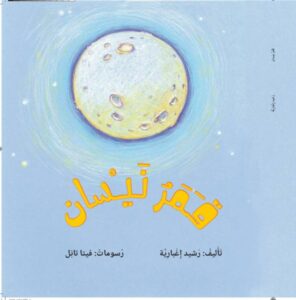 Nisan’s Moon
Nisan’s Moon 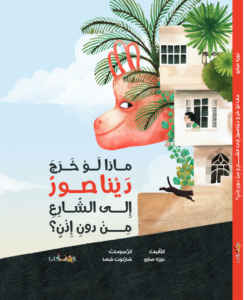 What if the Dinosaur Went Out to the Street
What if the Dinosaur Went Out to the Street 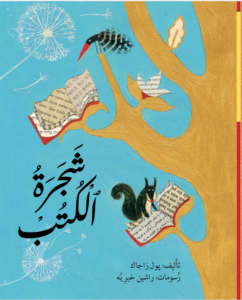 The book tree
The book tree 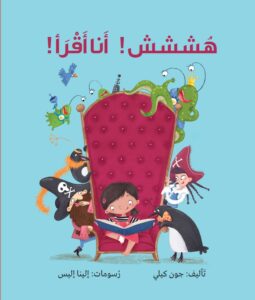 Shhh! I’m reading
Shhh! I’m reading 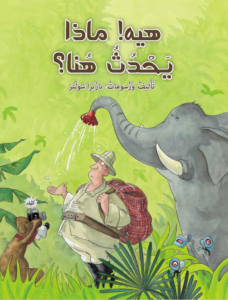 Hey, What’s Happening Here?
Hey, What’s Happening Here?  The Wolf Will Not Come
The Wolf Will Not Come 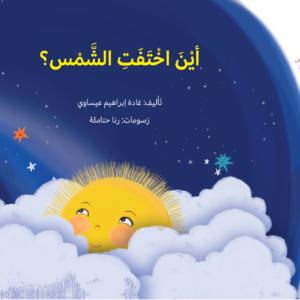 Where Did the Sun Go?
Where Did the Sun Go? 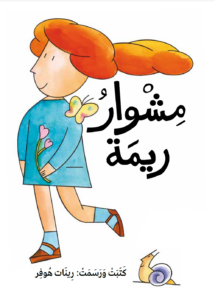 Rima’s walk
Rima’s walk 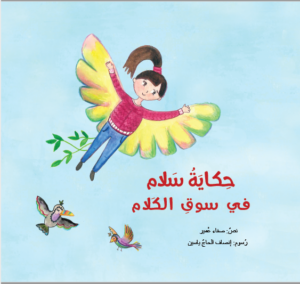 The Market of Words
The Market of Words 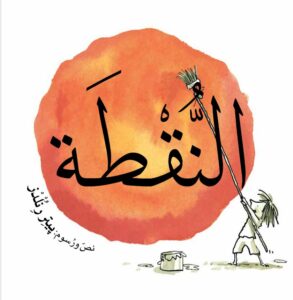 The Dot
The Dot 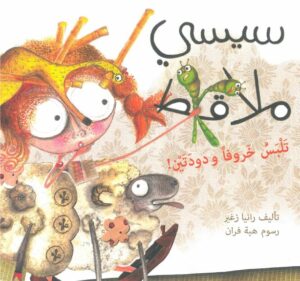 Sisi’s Clothespins
Sisi’s Clothespins 
